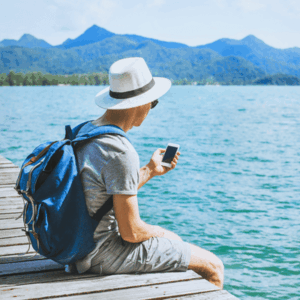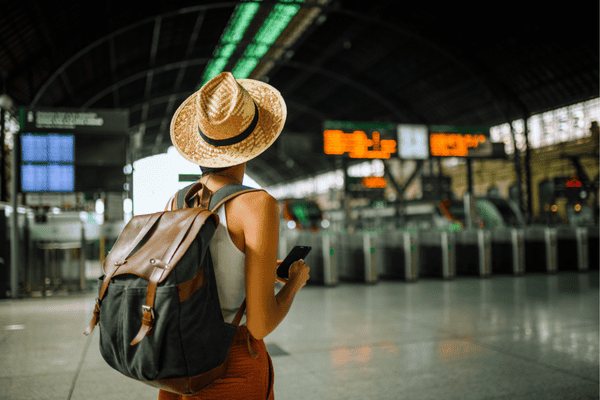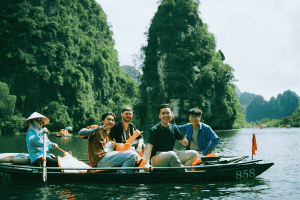No longer is luxury defined solely by thread counts or champagne service—true luxury now comes in the form of silence, mindfulness, and genuine disconnection from the digital cacophony that surrounds us.
This shift represents more than just a temporary trend; it signals a fundamental change in what travelers value. As digital saturation reaches unprecedented levels, our nervous systems and mental health have begun demanding balance. The result is a growing movement of travelers seeking destinations, accommodations, and experiences centered around acoustic wellness and the simple luxury of quietude.
In this comprehensive guide, we’ll explore the quiet travel phenomenon, why it’s rising in popularity, where to find these havens of tranquility, and how to stay connected (when necessary) without compromising your silent retreat.
Why Silence Has Become the Ultimate Luxury
The Psychological Cost of Noise
Research has consistently shown that noise pollution isn’t just annoying—it’s harmful to our health. Studies published in early 2025 by the World Health Organization confirmed what many suspected: prolonged exposure to noise above certain thresholds contributes significantly to increased stress hormones, sleep disturbances, cardiovascular issues, and cognitive impairment.
Dr. Elena Mikhailov, neurologist and sleep specialist at Stanford University, explains: “What we’re seeing is that the human brain never fully adapted to the constant auditory stimulation of modern life. When experiencing extended periods of relative quiet, our brains actually begin repairing neural pathways damaged by chronic noise exposure.”
This understanding has transformed silence from a simple absence of sound into an active healing modality—one that travelers are increasingly willing to pay premium prices to experience.

Digital Fatigue and the Pursuit of Presence
After years of remote work, Zoom meetings, and social media saturation, “digital fatigue” has become a recognized condition. A 2024 Pew Research study found that 78% of adults report experiencing symptoms of digital burnout, with 42% indicating it significantly impacts their quality of life.
Quiet travel responds directly to this exhaustion by offering spaces where digital devices are either discouraged or physically unable to function. This forced disconnection, once anxiety-inducing for many, is now being marketed as an exclusive experience.
“We’ve seen a complete reversal in customer attitudes,” notes Jean-Philippe Morin, general manager of The Silence Retreat in Quebec. “Five years ago, telling guests they wouldn’t have Wi-Fi was a problem. Now, it’s one of our main selling points, and we charge 30% more for our ‘Complete Silence’ packages than our standard accommodations.”
The New Status Symbol: Finding Unplugged Spaces
In an interesting twist of consumer psychology, the ability to completely disconnect has become a new status symbol. While anyone can be perpetually available online, only the truly privileged can afford to be unreachable. This social dynamic has fueled the rise of exclusive quiet destinations that offer the ultimate luxury: permission to be unavailable.
Social media influencers have played a paradoxical role in this trend, posting about their “offline experiences” once they return to connectivity. The hashtag #QuietLuxury has garnered over 2 billion views across platforms in the past year alone, demonstrating how silence has become aspirational content.
Where to Find Quiet Luxury: Destinations Embracing Acoustic Wellness
Silent Sanctuaries: Hotels and Retreats
Specialized quiet hotels and retreats have expanded dramatically in the past 18 months. These properties go beyond simply offering peaceful environments—they are architecturally designed to minimize ambient noise through sound-dampening materials, strategic layouts, and natural buffers.
Notable examples include:
- Silence Patagonia (Chile): Built into a remote cliff overlooking the Torres del Paine National Park, this retreat features rooms averaging 22 decibels during daytime—roughly equivalent to a whispered conversation.
- Mujo Ryokan (Japan): This contemporary take on traditional Japanese accommodations near Kyoto enforces a “whisper-only” policy throughout its premises and employs noise-cancellation technology in walls and windows.
- The Hush (Norway): Located in the Arctic Circle, this collection of isolated cabins sits on a frozen lake during winter months, where the snow creates natural sound insulation so effective that guests can hear their own heartbeats.
- Quietude Resort (New Zealand): Situated in a designated “quiet zone” where aviation routes are restricted, this upscale eco-resort features individual villas spaced half a mile apart to ensure complete auditory privacy.
Each of these properties has reported booking waitlists extending into 2026, demonstrating the extraordinary demand for sanctioned silence.
Silent Tourism Zones
Following the pioneering model of “dark sky reserves” that limit light pollution, several regions worldwide have now established “silent tourism zones” where mechanical noise is strictly regulated.
Switzerland’s Quiet Valley initiative in the Engadin region has converted an entire alpine valley into a mechanically silent area. Transportation is limited to electric shuttles running on special noise-reducing tires, and businesses within the zone must adhere to strict decibel limits. The economic results have been striking—average tourist spending in the Quiet Valley is 40% higher than in comparable Swiss destinations.
Finland has designated five National Quiet Parks, where natural soundscapes are protected as rigorously as wildlife. Visitors pay premium entry fees and must undergo a brief acoustic etiquette orientation before entering.
Urban Quiet Retreats
The quiet travel trend isn’t limited to remote locations. Urban centers have begun developing “quiet quarters” to attract travelers seeking respite without completely leaving city amenities behind.
Barcelona’s Silenci District represents the gold standard in urban acoustic planning. This 12-block area uses noise-dampening pavement, restricts vehicle access, incorporates green sound barriers, and enforces strict commercial noise regulations. Hotels within the district charge up to 65% more than comparable properties elsewhere in the city.
Tokyo, Paris, and Vancouver have launched similar initiatives, recognizing that acoustic wellness can be a powerful driver of tourism revenue in otherwise saturated urban markets.
How to Embrace Quiet Travel: Practical Tips for 2025
Planning Your Quiet Getaway
When planning a quiet travel experience, timing is everything. Consider these factors:
- Shoulder Seasons: Visit popular quiet destinations during their shoulder seasons when tourist numbers are lower and natural environments tend to be quieter.
- Midweek Adventures: Weekends bring crowds even to remote locations. Schedule your quiet travel for midweek when possible.
- Research Sound Environments: Many quiet destinations now provide detailed information about their ambient sound levels during different seasons and times of day.
- Transportation Considerations: How you arrive matters. Train travel typically creates less personal stress than flying, and electric vehicle rentals maintain your quiet experience throughout the journey.

Essential Gear for Acoustic Wellness
The quiet travel market has spawned specialized equipment designed to enhance the silent experience:
- Advanced Noise-Cancelling Earbuds: The latest models don’t just play music—they can be used solely for their noise-cancellation properties, reducing ambient sound by up to 45 decibels.
- Sound Masking Devices: Portable sound machines that create consistent, gentle white noise can help mask unpredictable sounds in new environments.
- Acoustic Room Assessors: These smartphone attachments measure the decibel levels of accommodations, allowing travelers to verify the quietness of their rooms.
Balancing Connectivity with Quiet
Even while pursuing silence, most travelers need some level of connectivity—for emergencies, occasional work check-ins, or sharing their experiences. This is where eSIM technology becomes invaluable for quiet travelers.
Unlike traditional SIM cards that require in-person setup and potentially stressful interactions in unfamiliar languages, eSIMs can be pre-configured before departure. This means you can:
- Set up essential connectivity before your journey
- Configure “quiet hours” when notifications are automatically silenced
- Maintain the ability to connect when necessary without carrying multiple devices
With an eSIM from TerminaleSIM partners, you can establish precisely the level of connectivity you need—from emergency-only access to occasional high-speed sessions for sharing your quiet travel experiences—without disrupting your journey for connectivity issues.
The Scientific Benefits: What Quiet Travel Does for Your Brain
The benefits of quiet travel extend far beyond simple relaxation. Neuroscience research from 2024-2025 has illuminated several profound effects:
Neurogenesis and Cognitive Enhancement
A groundbreaking study from the University of California found that extended periods in quiet environments (defined as below 30 decibels for at least 3 hours daily) increased hippocampal neurogenesis—the growth of new brain cells in the region associated with memory and learning.
Participants who spent two weeks in quiet environments showed measurable improvements in:
- Problem-solving abilities
- Creative thinking
- Working memory capacity
- Attention restoration
These cognitive benefits persisted for up to three months after returning to normal environments, suggesting that quiet travel provides mental advantages extending well beyond the vacation itself.
Improved Sensory Processing
When relieved from constant noise processing, our brains reallocate those resources to other sensory systems. Many quiet travelers report heightened taste experiences, more vivid visual processing, and increased tactile sensitivity.
“It’s like your brain has been running a background program dealing with noise, and when that program shuts down, everything else runs more efficiently,” explains neuroscientist Dr. Ramesh Patel.
This neurological “reset” explains why food often tastes better, colors appear more vibrant, and physical sensations feel more pronounced during and after quiet travel experiences.
Sleep Architecture Enhancement
Perhaps the most significant health benefit of quiet travel involves sleep quality. Research from the European Sleep Institute demonstrates that just one week in a quiet environment can reset disrupted sleep architecture—the natural progression through sleep stages.
Most notably, quiet environments facilitate more time in deep slow-wave sleep, the stage most associated with physical restoration and memory consolidation. This improved sleep quality creates a virtuous cycle, enhancing daytime experiences through better cognitive function and emotional regulation.
The Future of Quiet Travel: What’s Next?
Sonic Architecture and Personalized Acoustics
The next frontier in quiet travel involves personalized acoustic environments. Several luxury properties are already experimenting with rooms that can be acoustically customized to each guest’s preferences.
“Some people find absolute silence unsettling,” explains acoustic architect Maria Fernandez. “The future isn’t about eliminating all sound—it’s about giving travelers precise control over their soundscape.”
These customizable sonic environments might include:
- Programmable white noise or nature sounds at specific volumes
- Active noise cancellation targeting particular frequency ranges
- Structural elements that can be adjusted to change room acoustics
- Personalized sound “prescriptions” based on individual stress patterns
Community Quiet Initiatives
The popularity of quiet travel has begun inspiring community-based initiatives beyond the tourism sector. The Quiet Community Certification program, launched in early 2025, provides guidelines for municipalities wishing to create designated quiet zones for both residents and visitors.
These community initiatives suggest that the principles of quiet travel may eventually influence broader urban planning and lifestyle choices, creating more permanent acoustic wellness spaces in everyday environments.
Conclusion: The Lasting Impact of Quiet Travel
As we navigate 2025, quiet travel has evolved from a niche interest to a transformative approach to both vacation and wellness. This shift represents our collective recognition that acoustic environments profoundly impact our physical health, mental clarity, and emotional wellbeing.
Whether you’re planning an extended silent retreat or simply incorporating elements of quiet travel into your next vacation, the benefits are both immediate and enduring. By prioritizing acoustic wellness alongside traditional travel considerations, you’re investing in a deeper form of restoration.
Before embarking on your quiet journey, ensure you have reliable connectivity when you need it—without the hassle of hunting for local SIM cards or dealing with expensive roaming charges. Compare eSIM plans for your quiet destination now and experience the perfect balance of disconnection and essential connection during your travels.
With the right preparation, 2025 can be the year you discover the ultimate luxury: the transformative power of silence.



